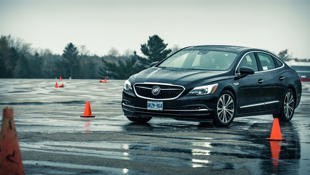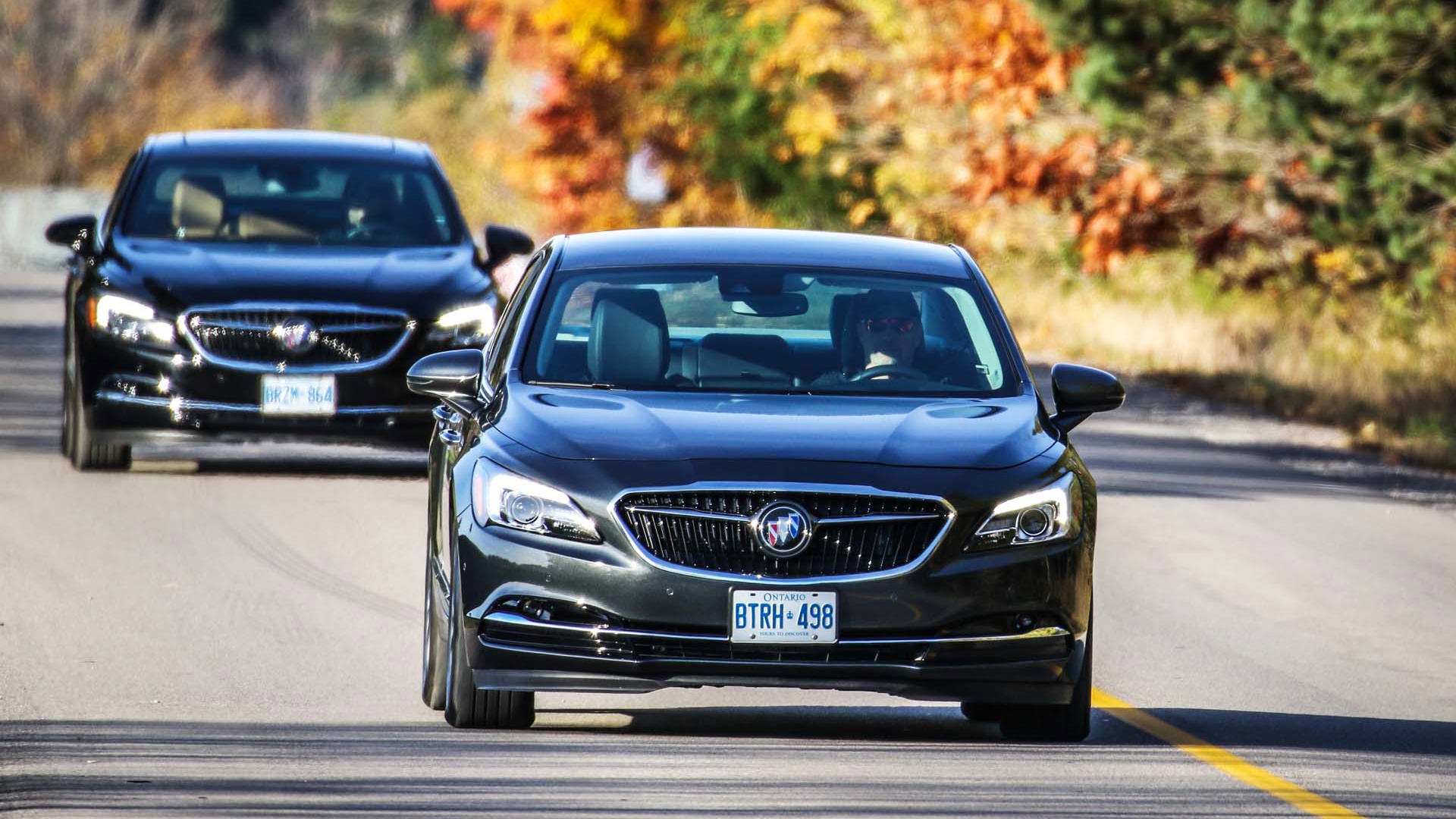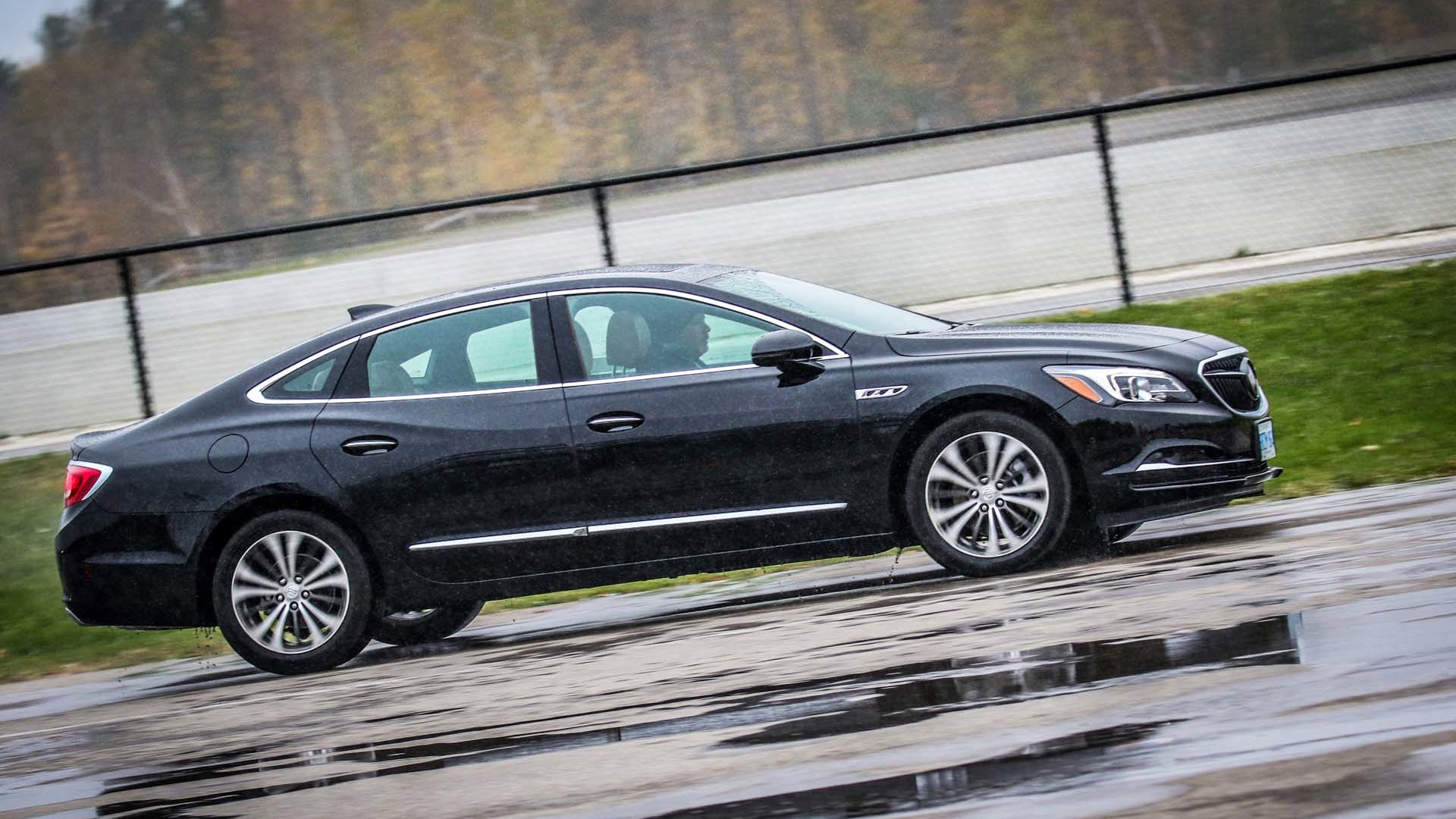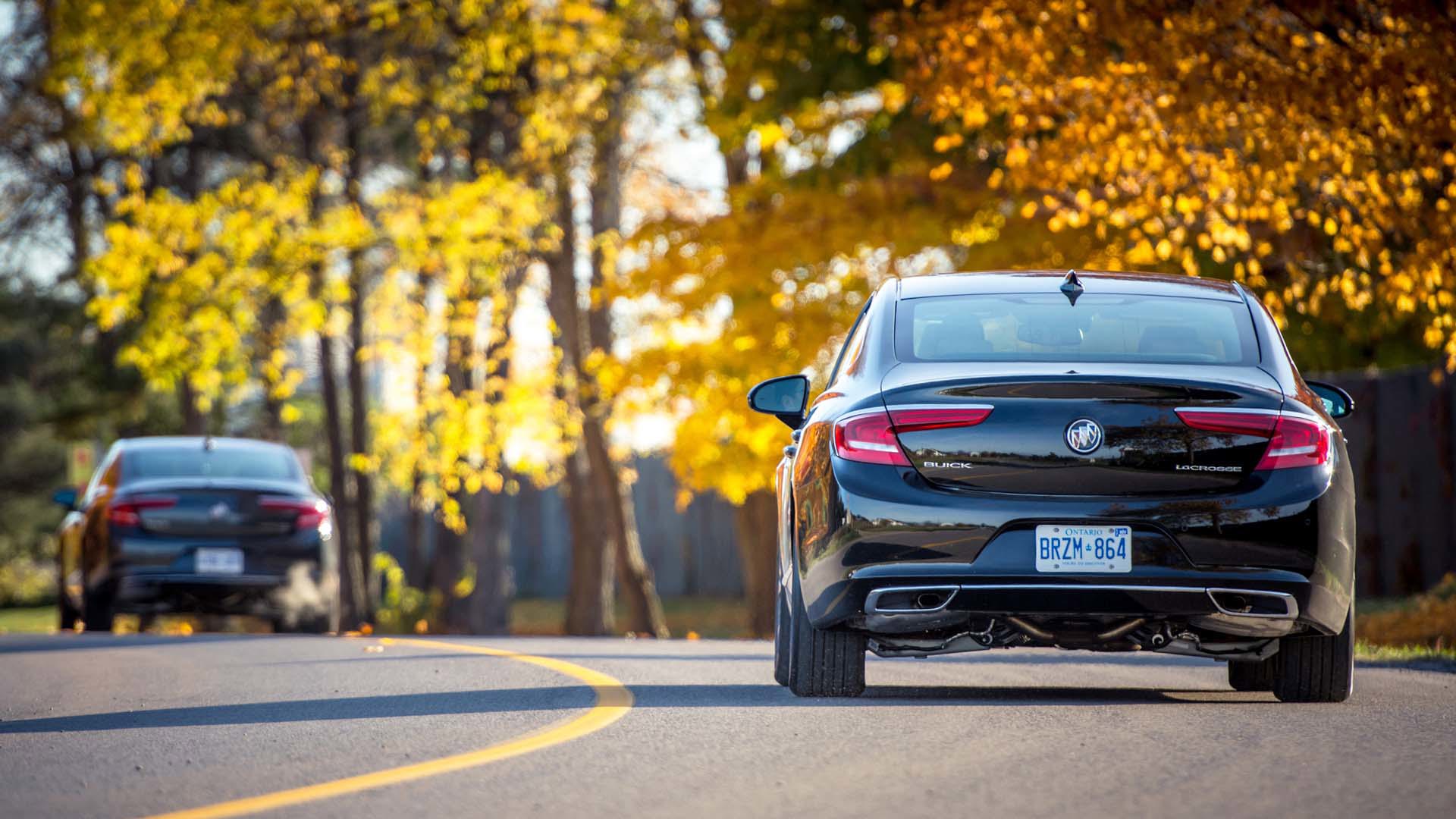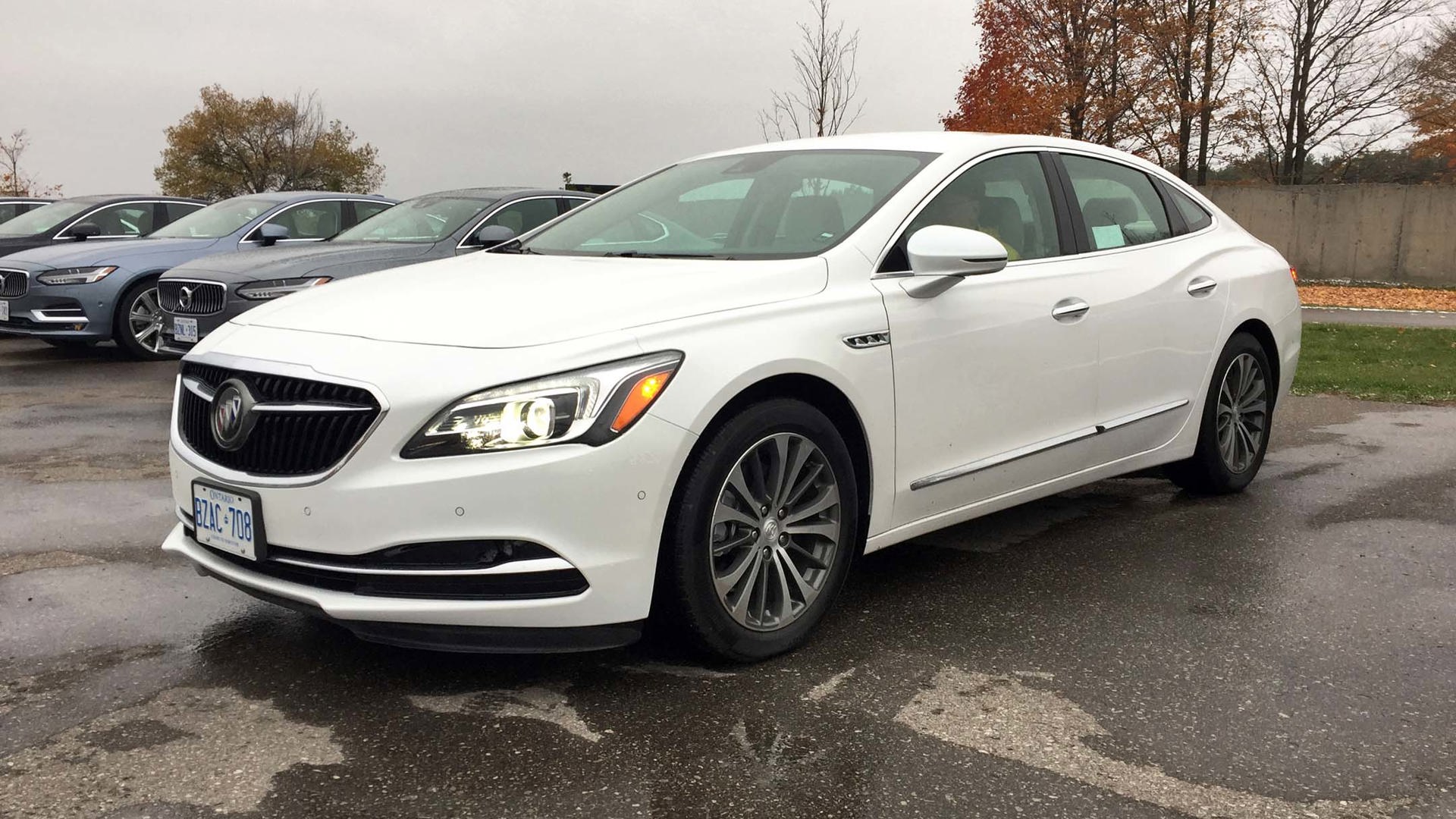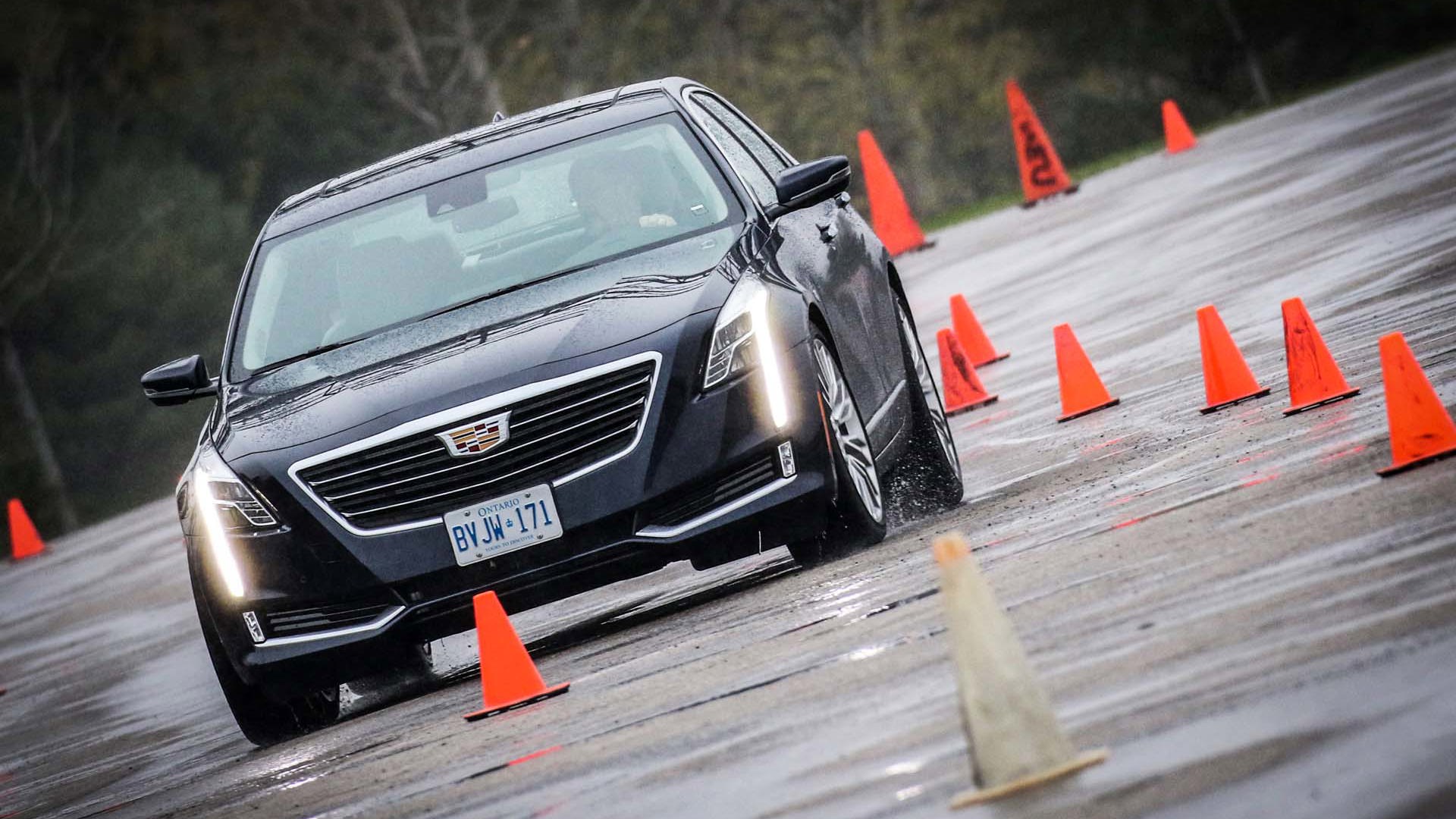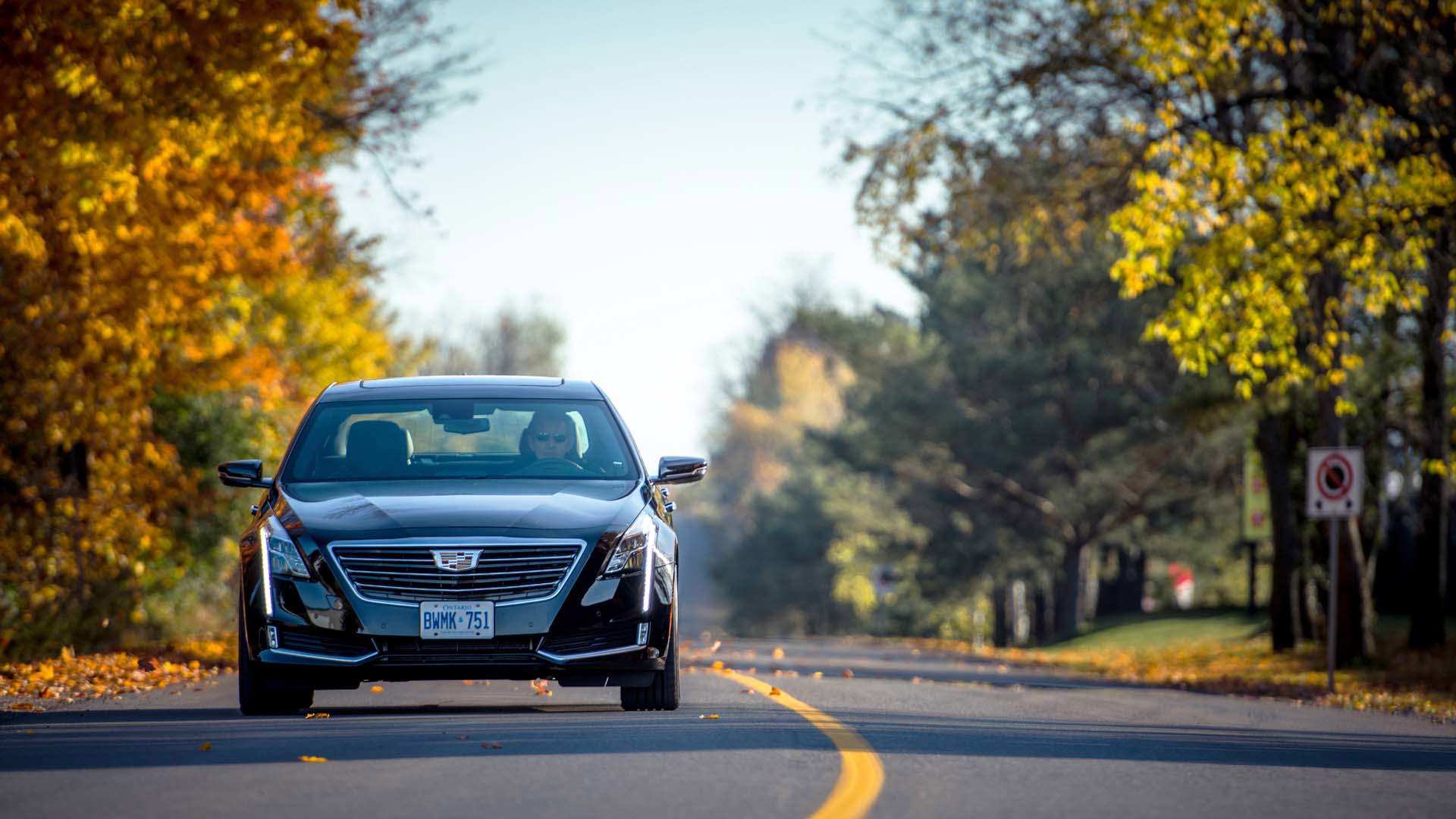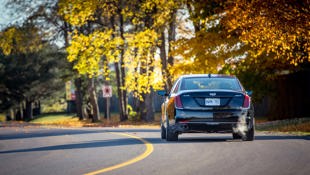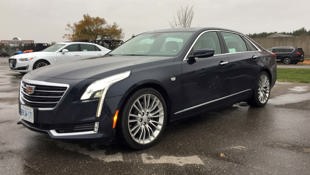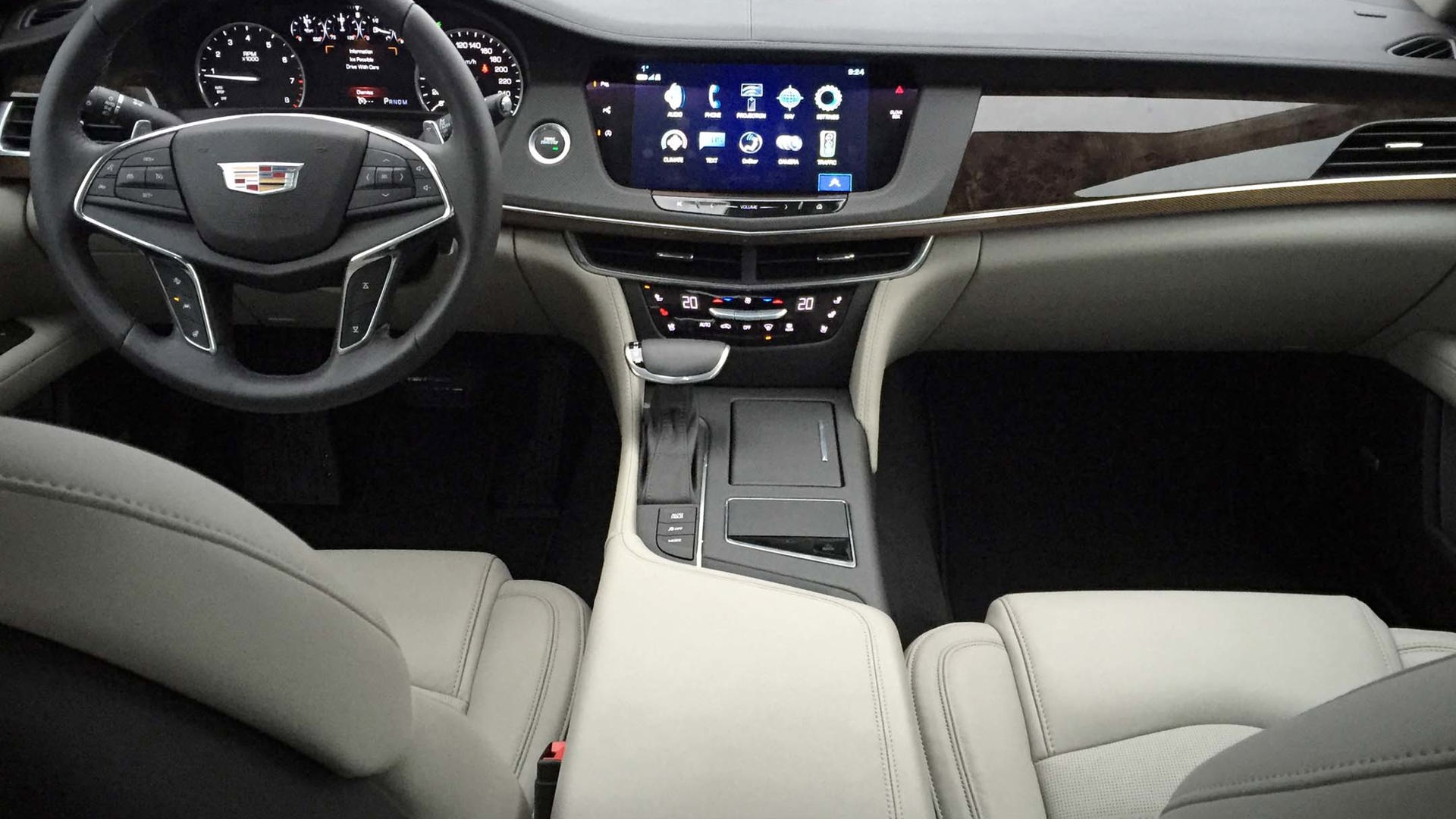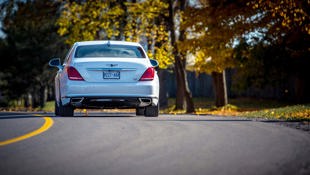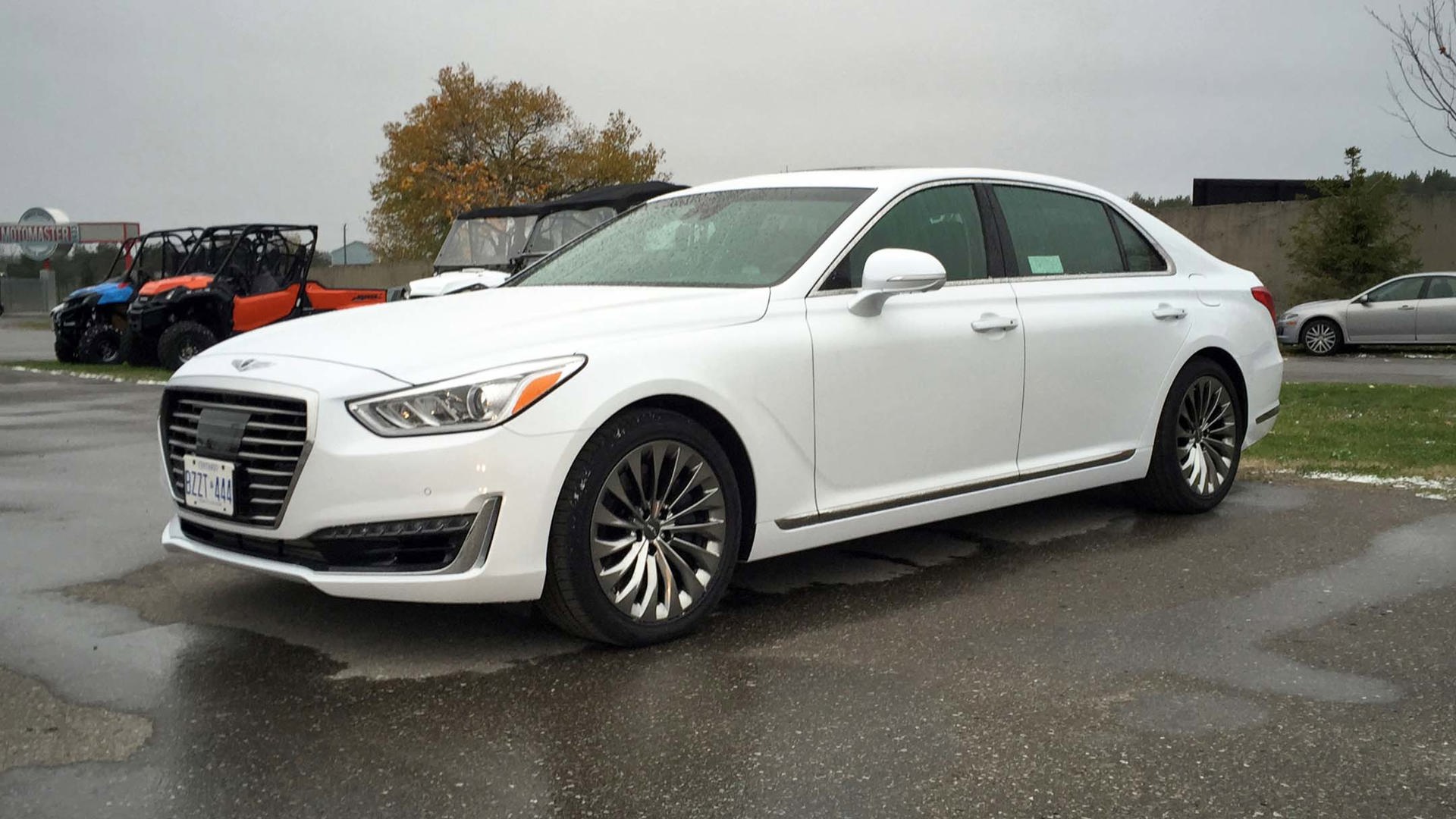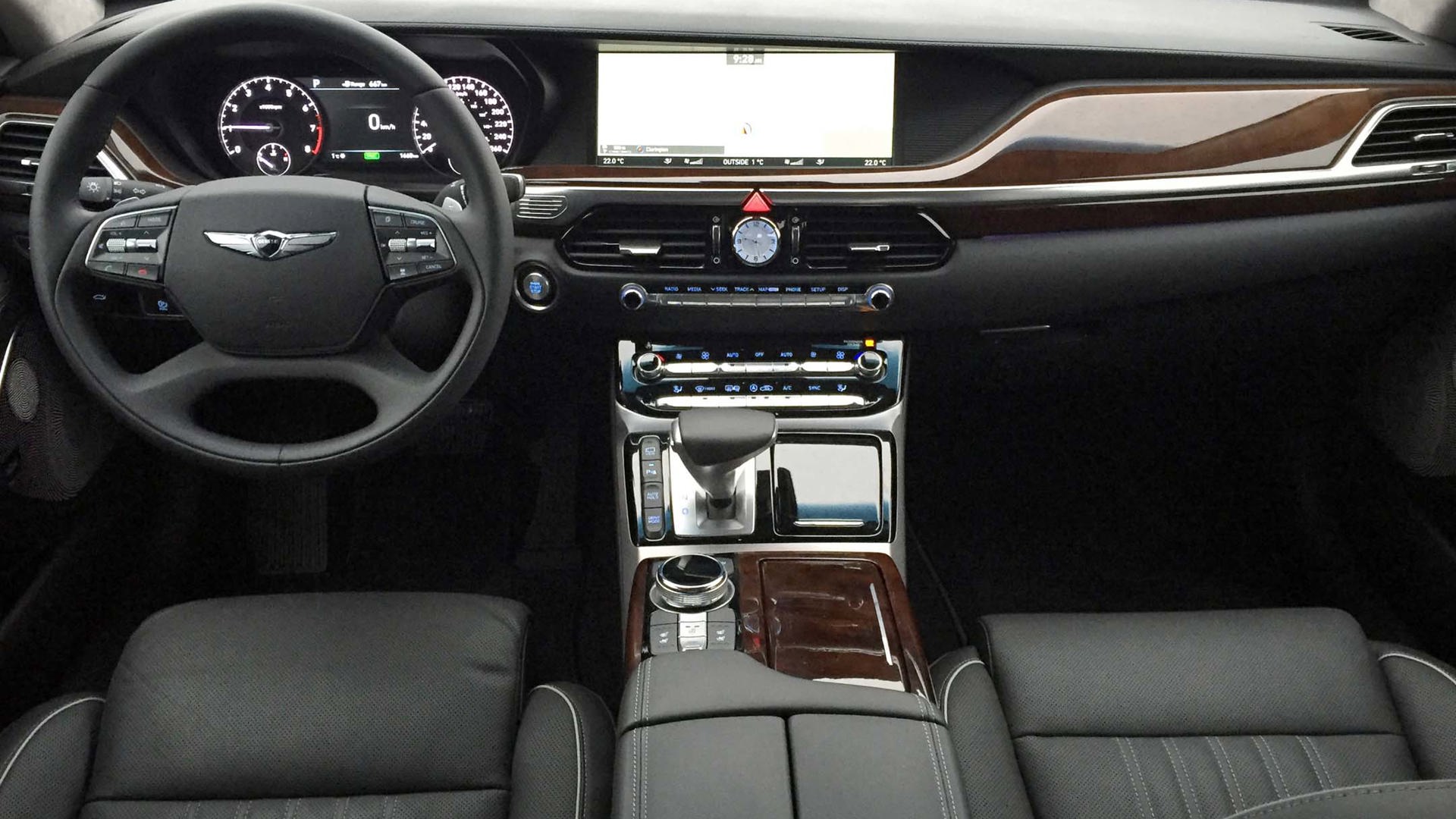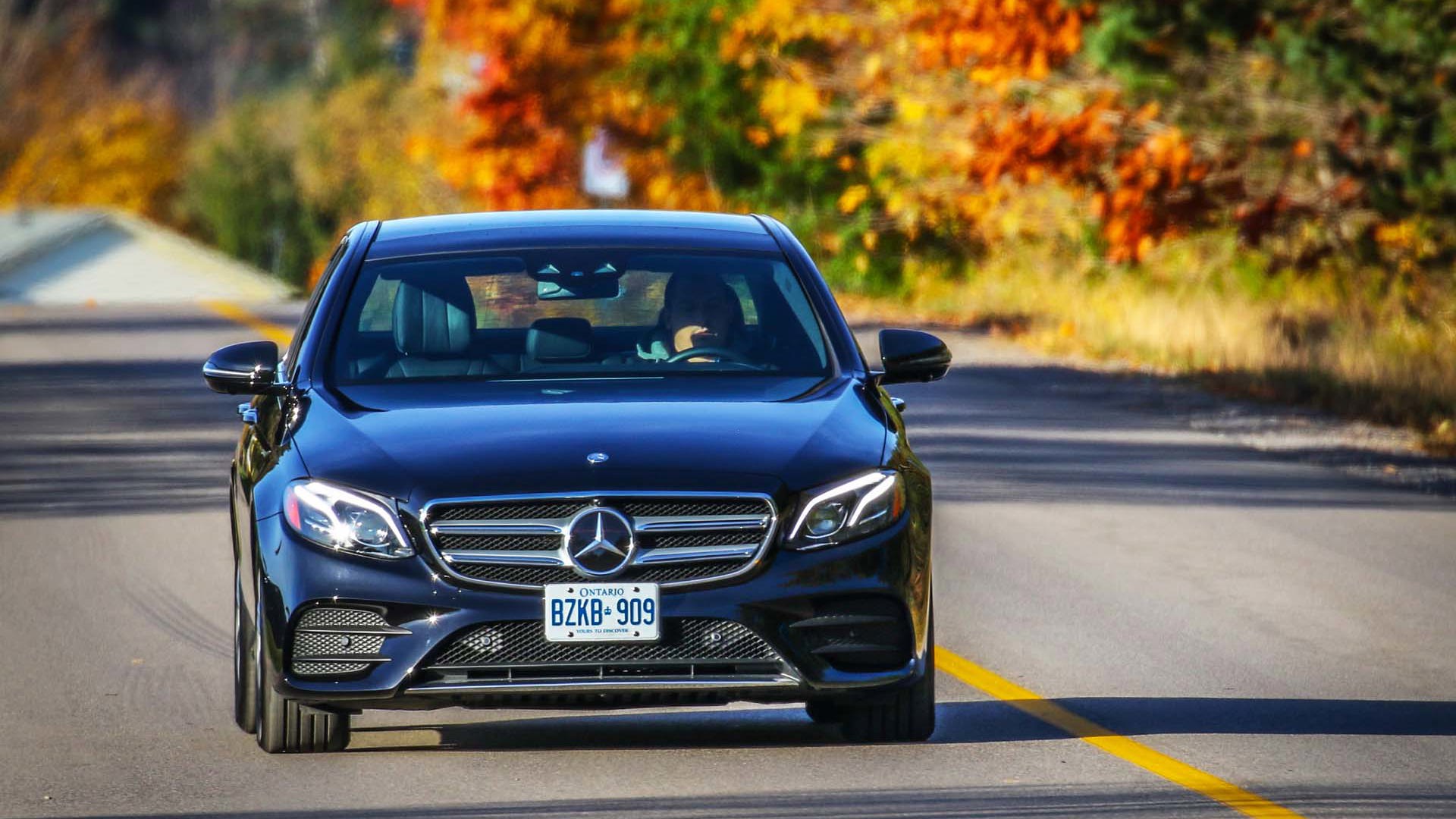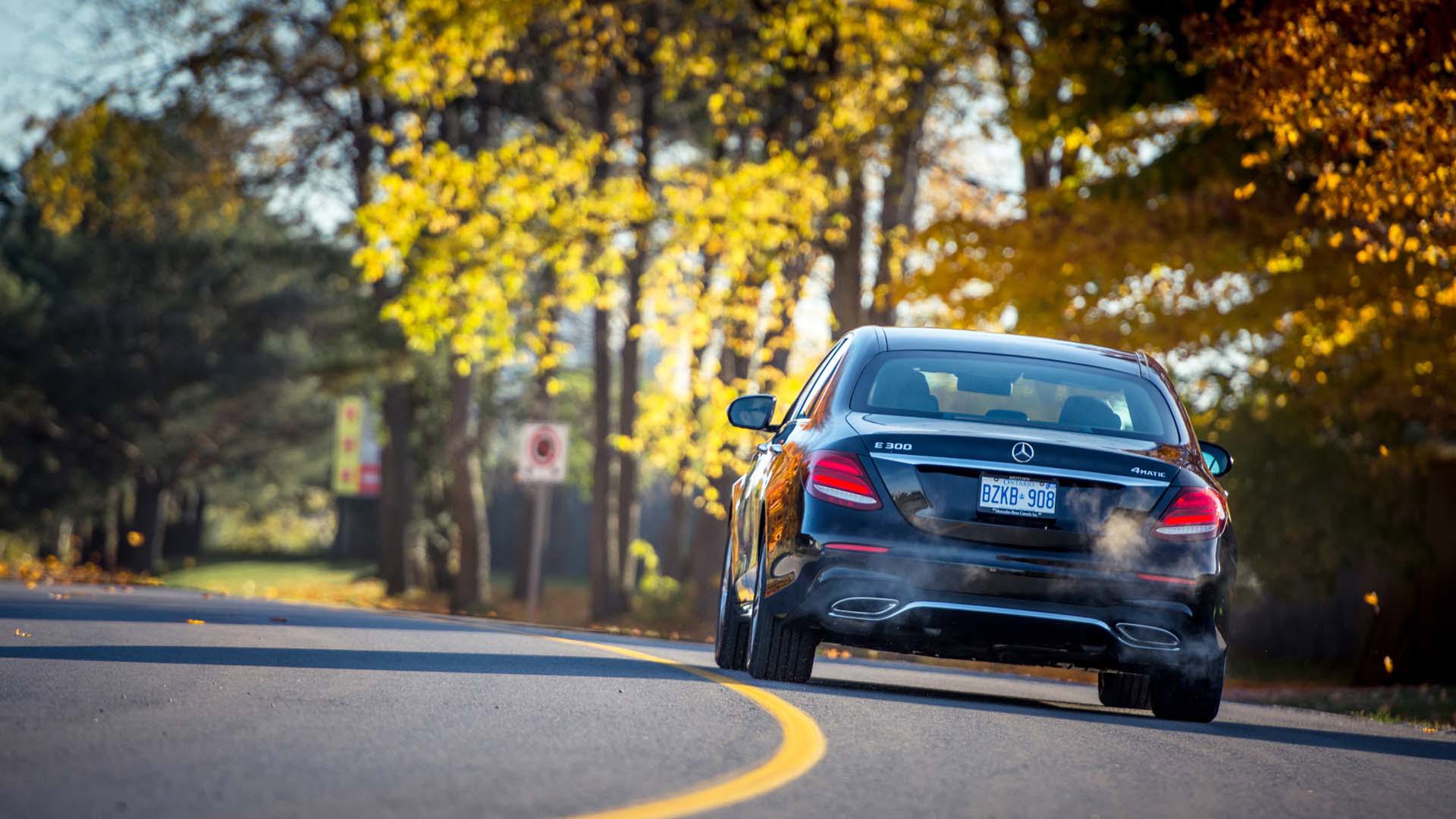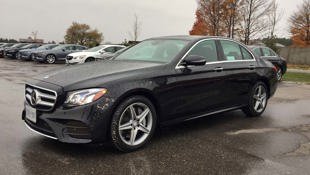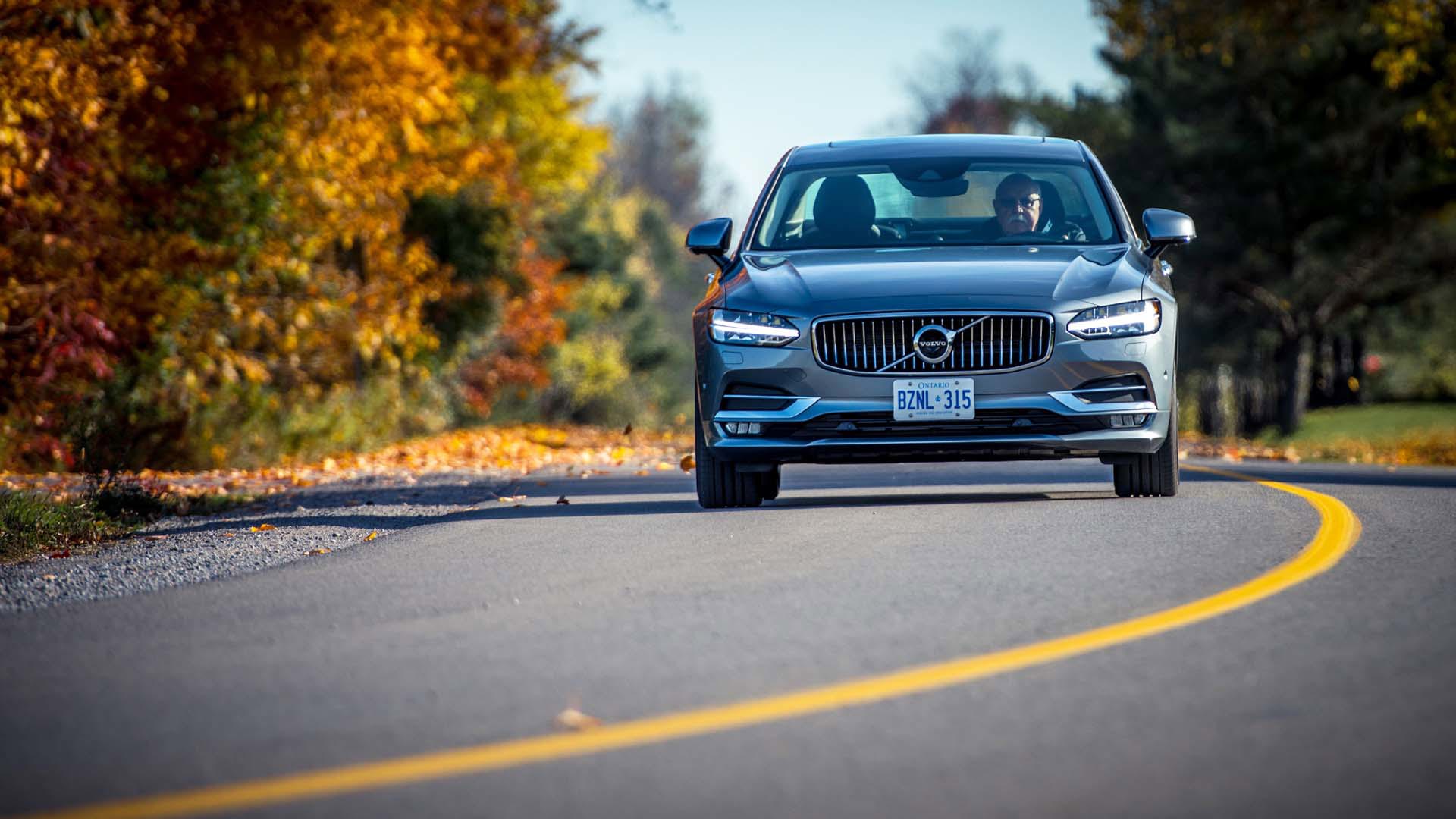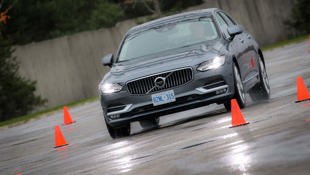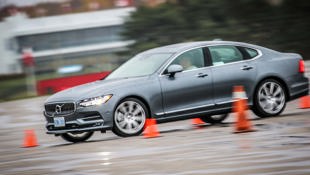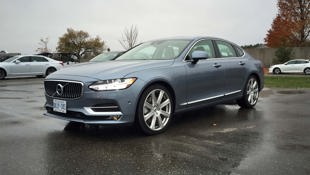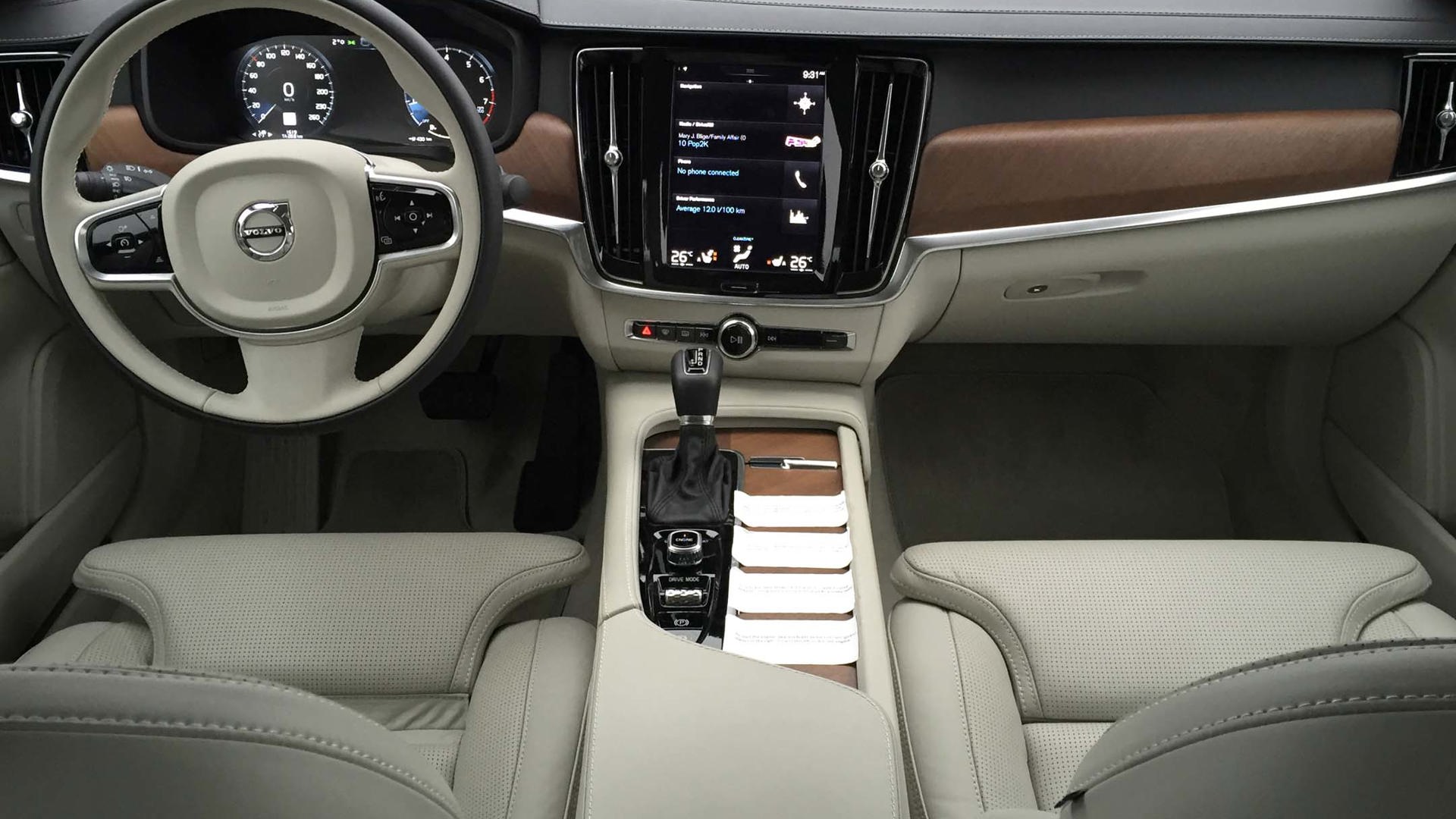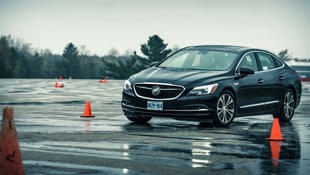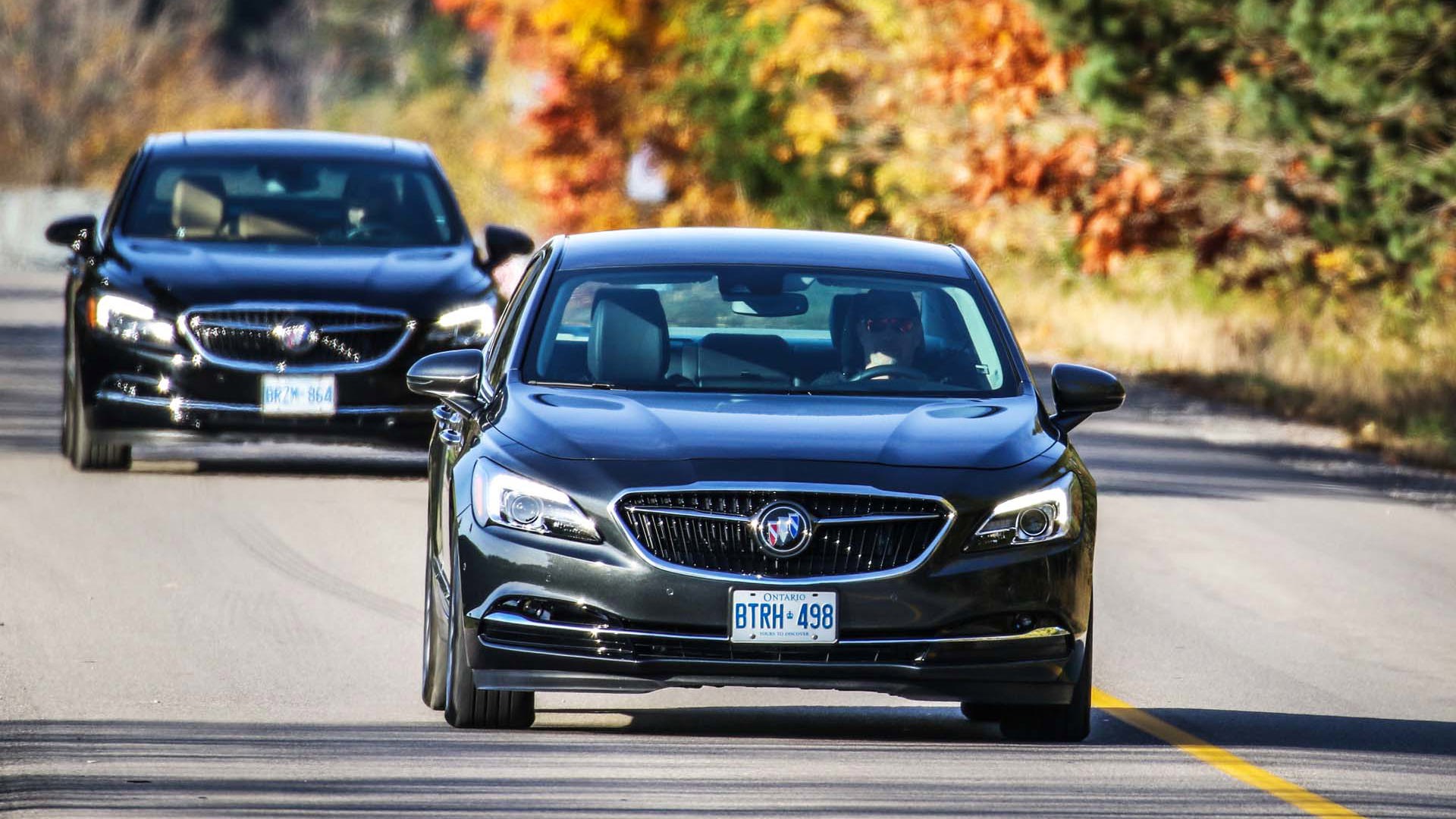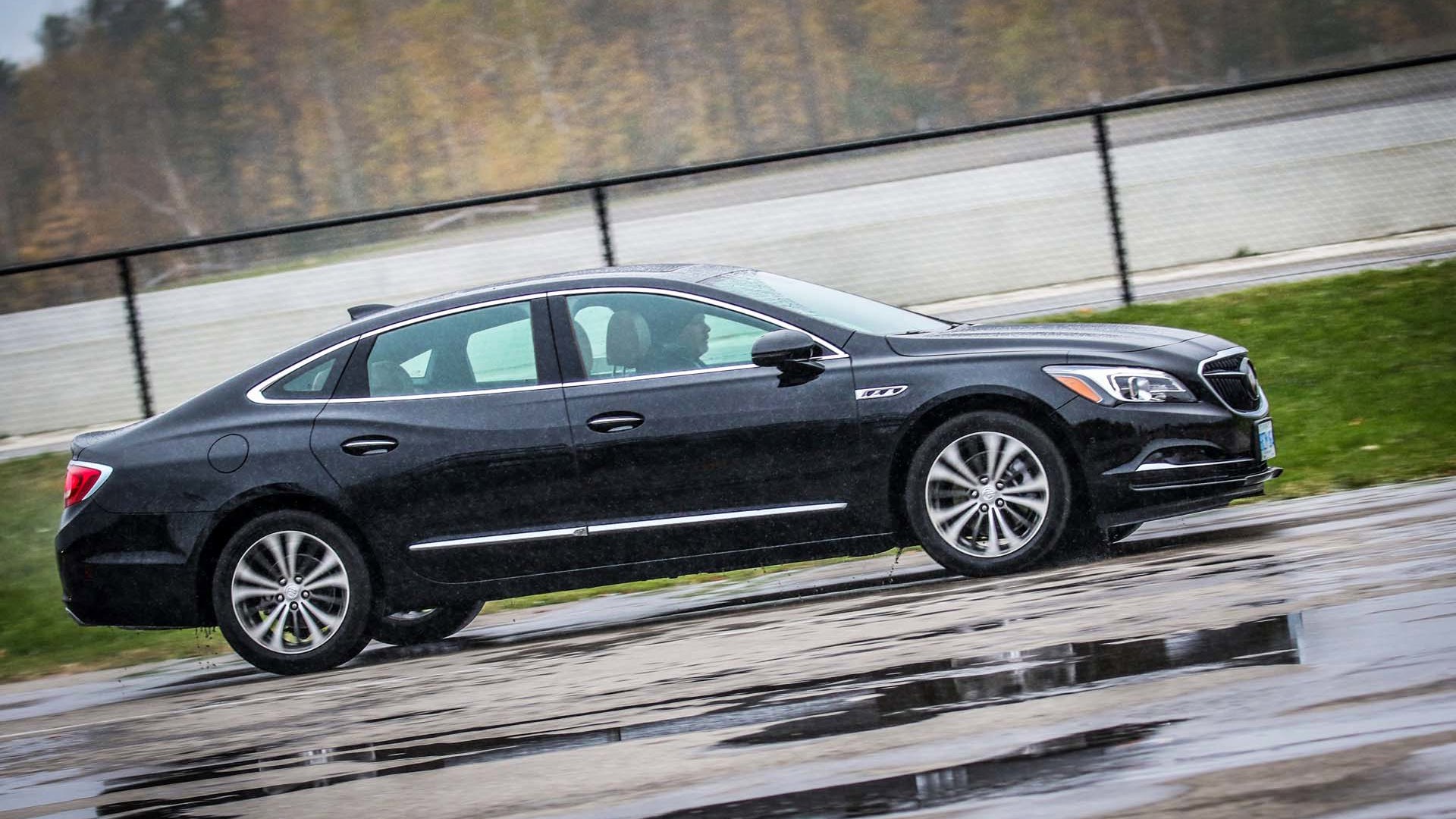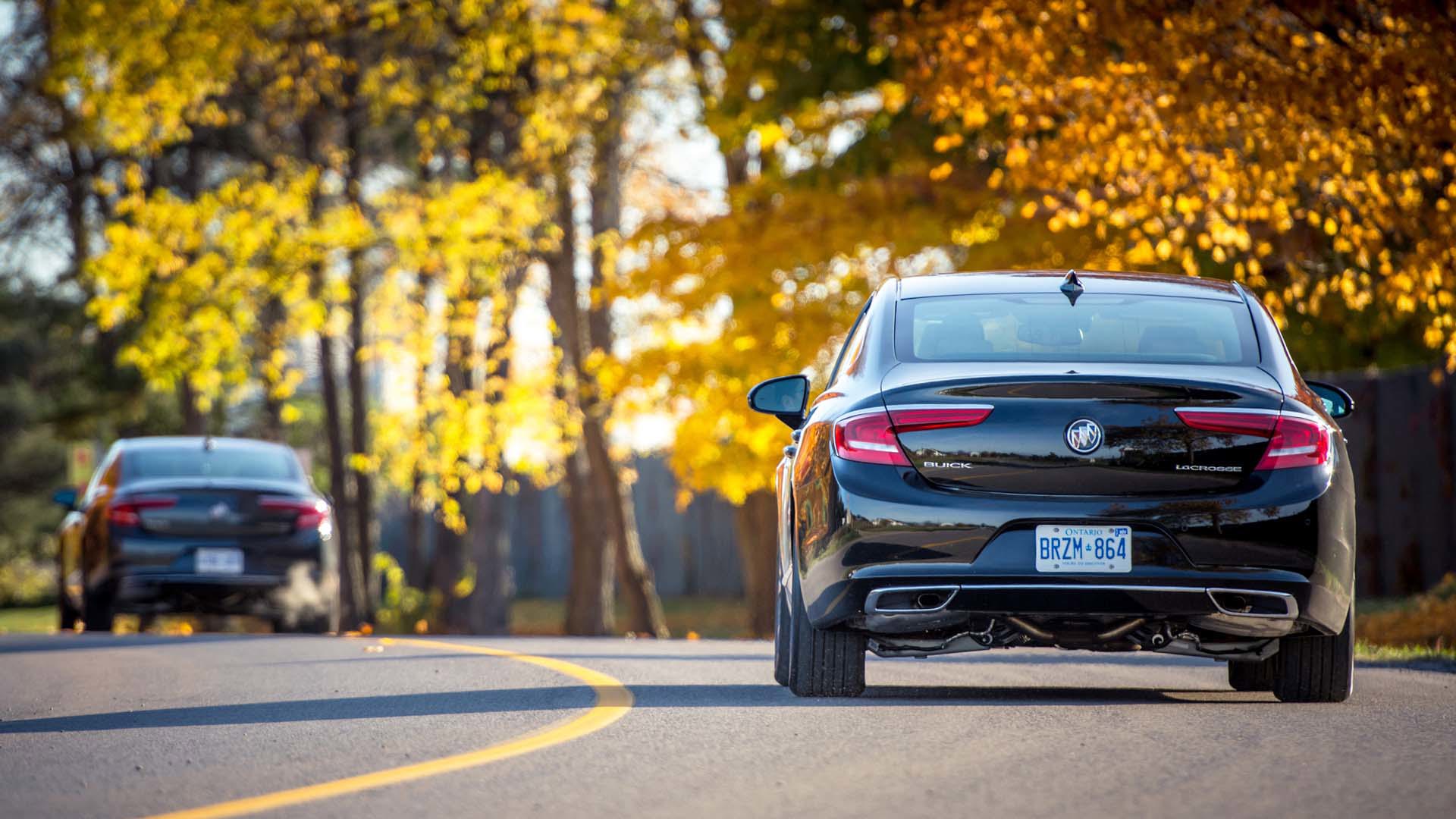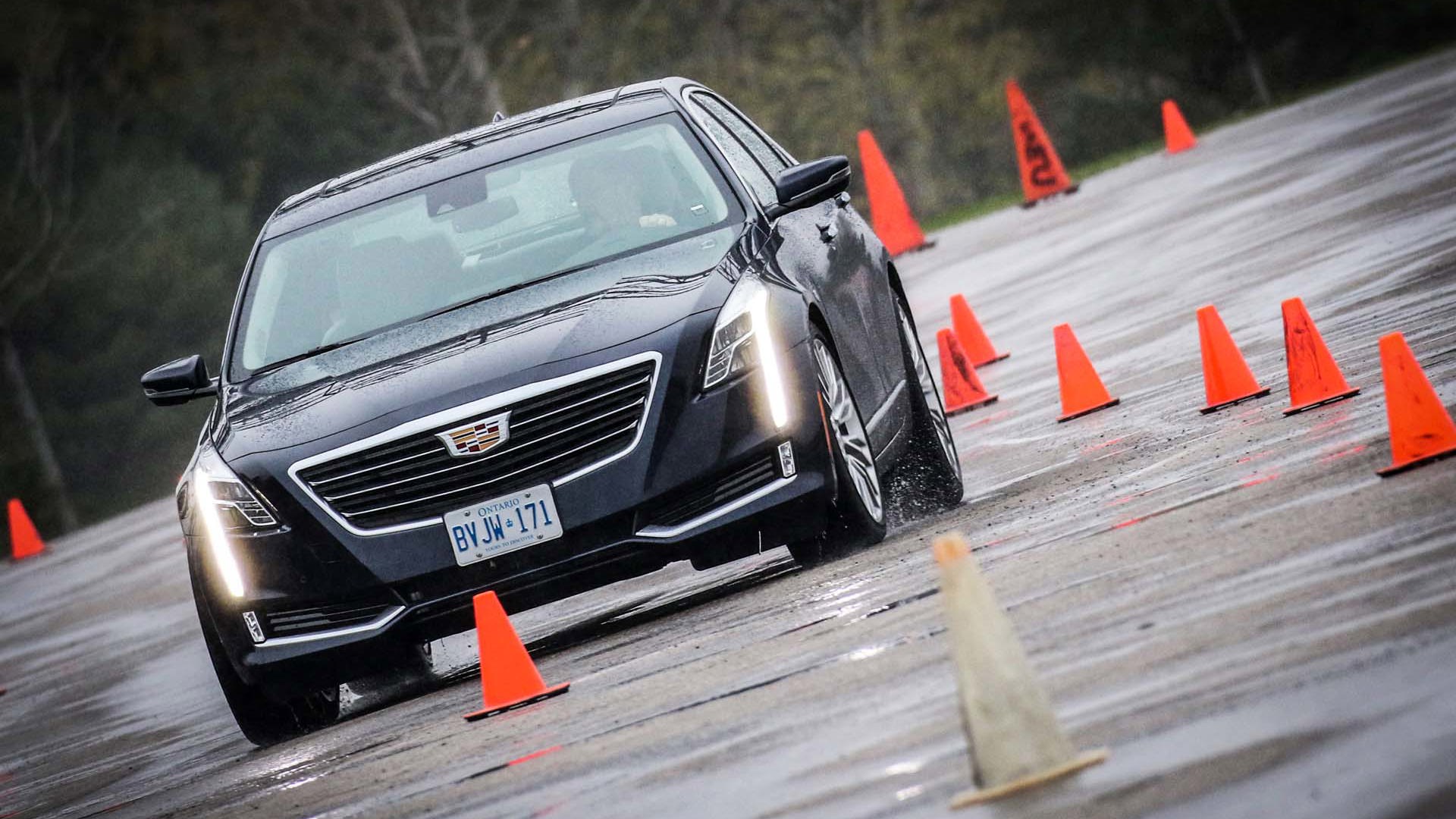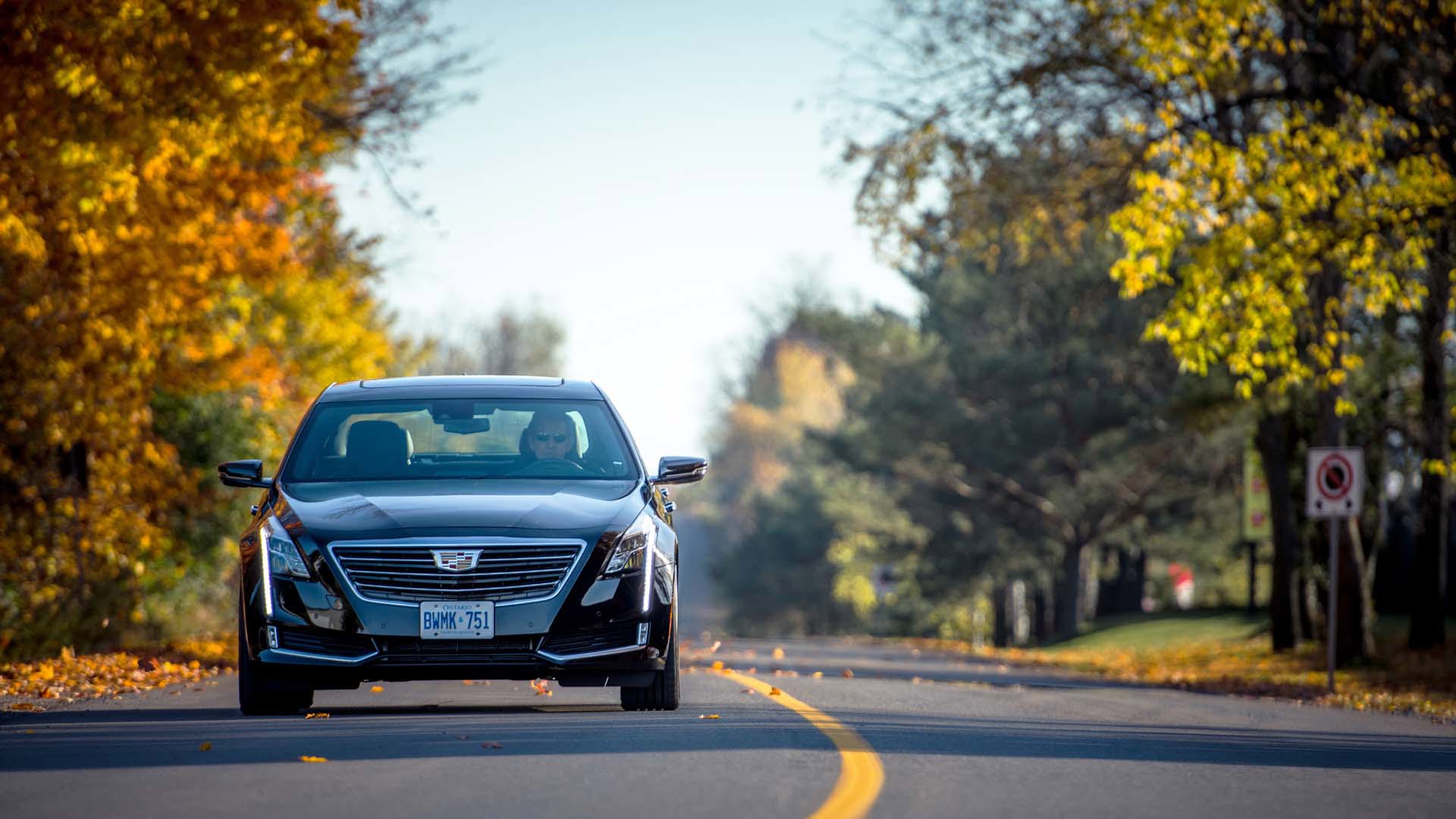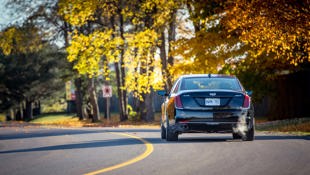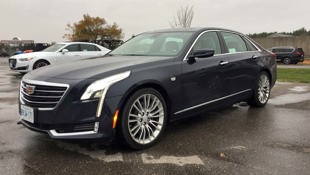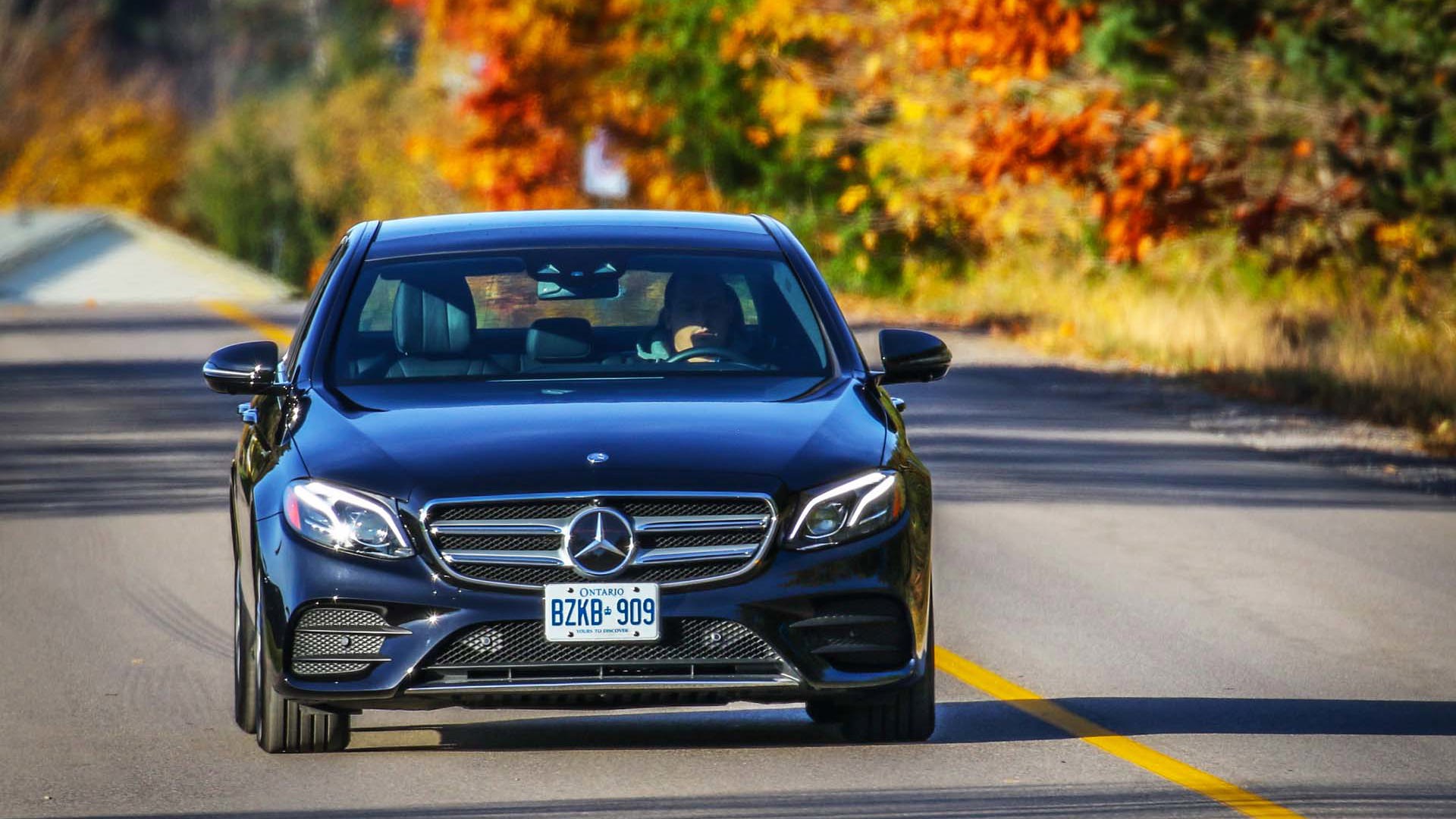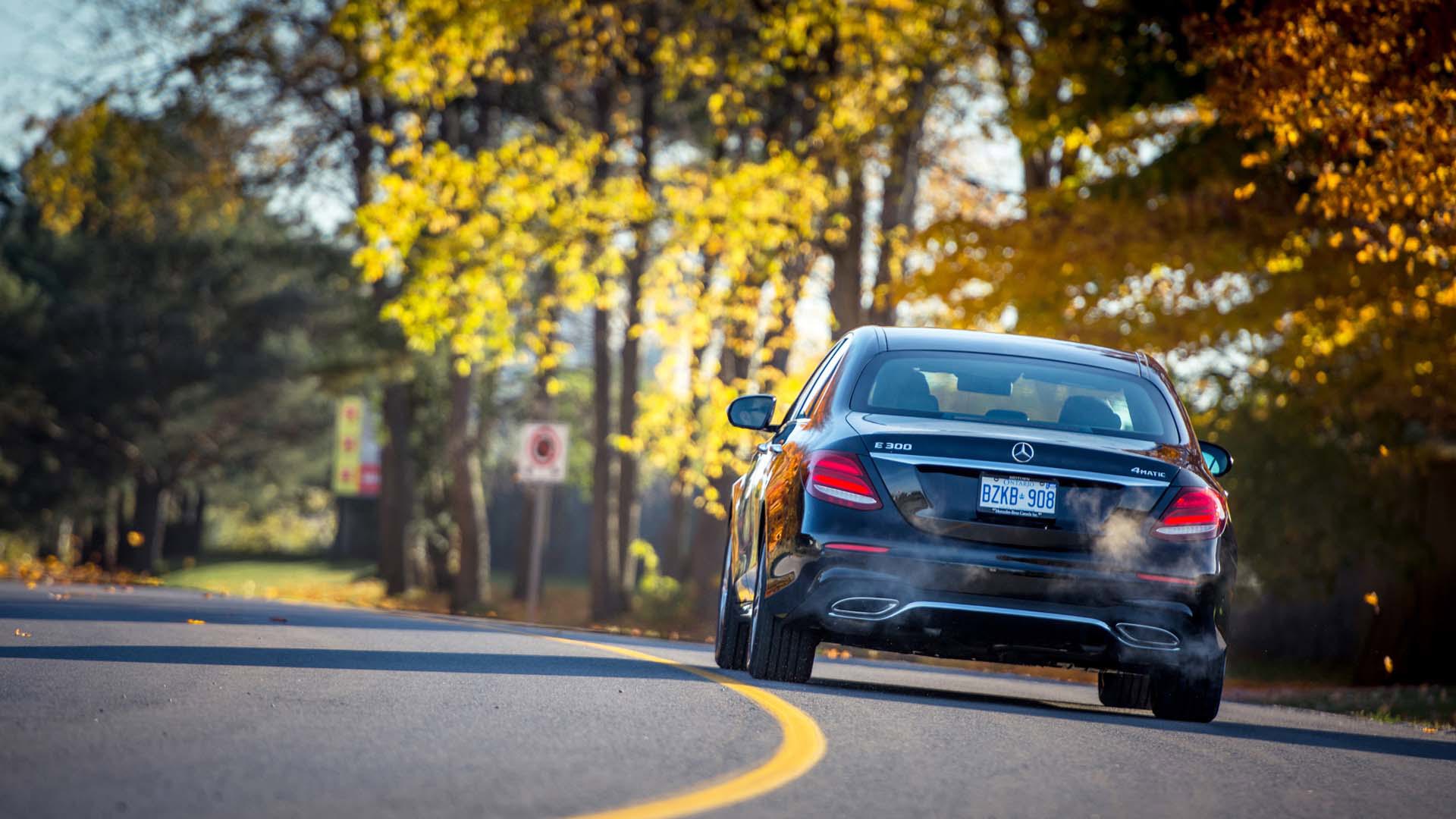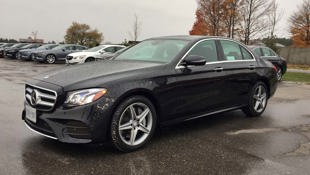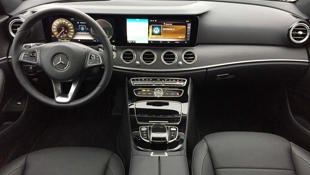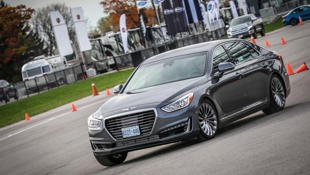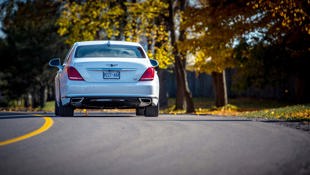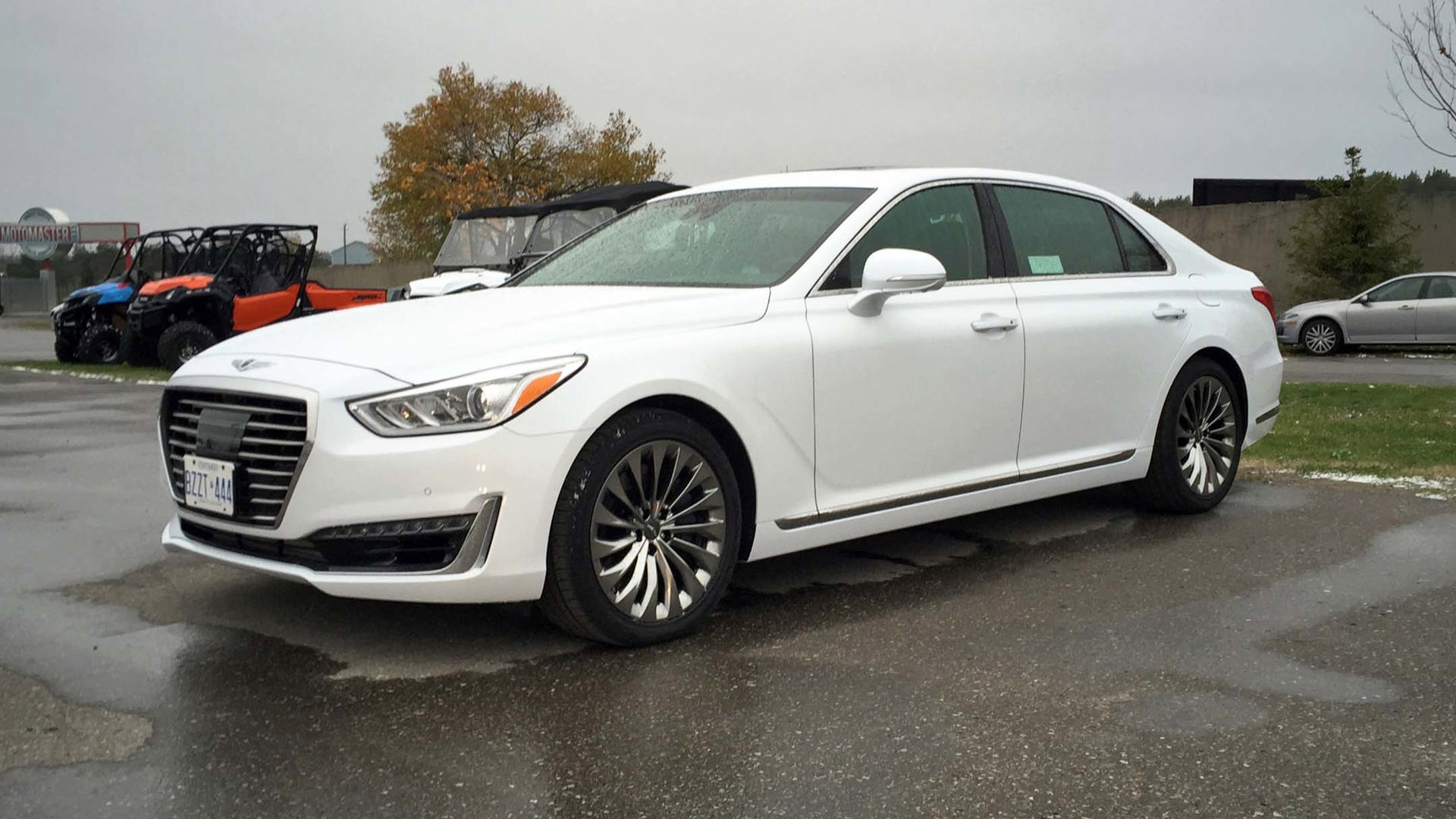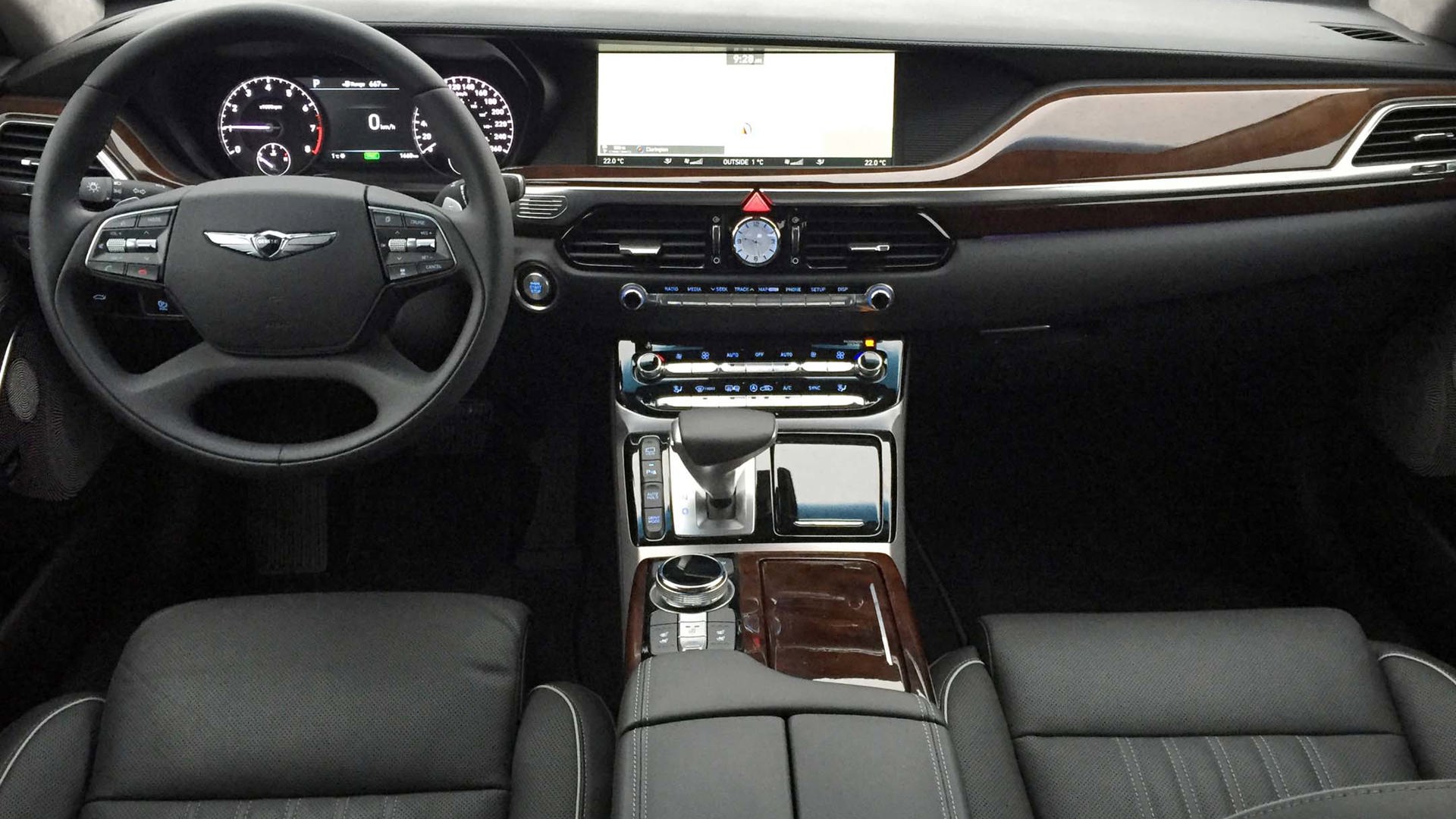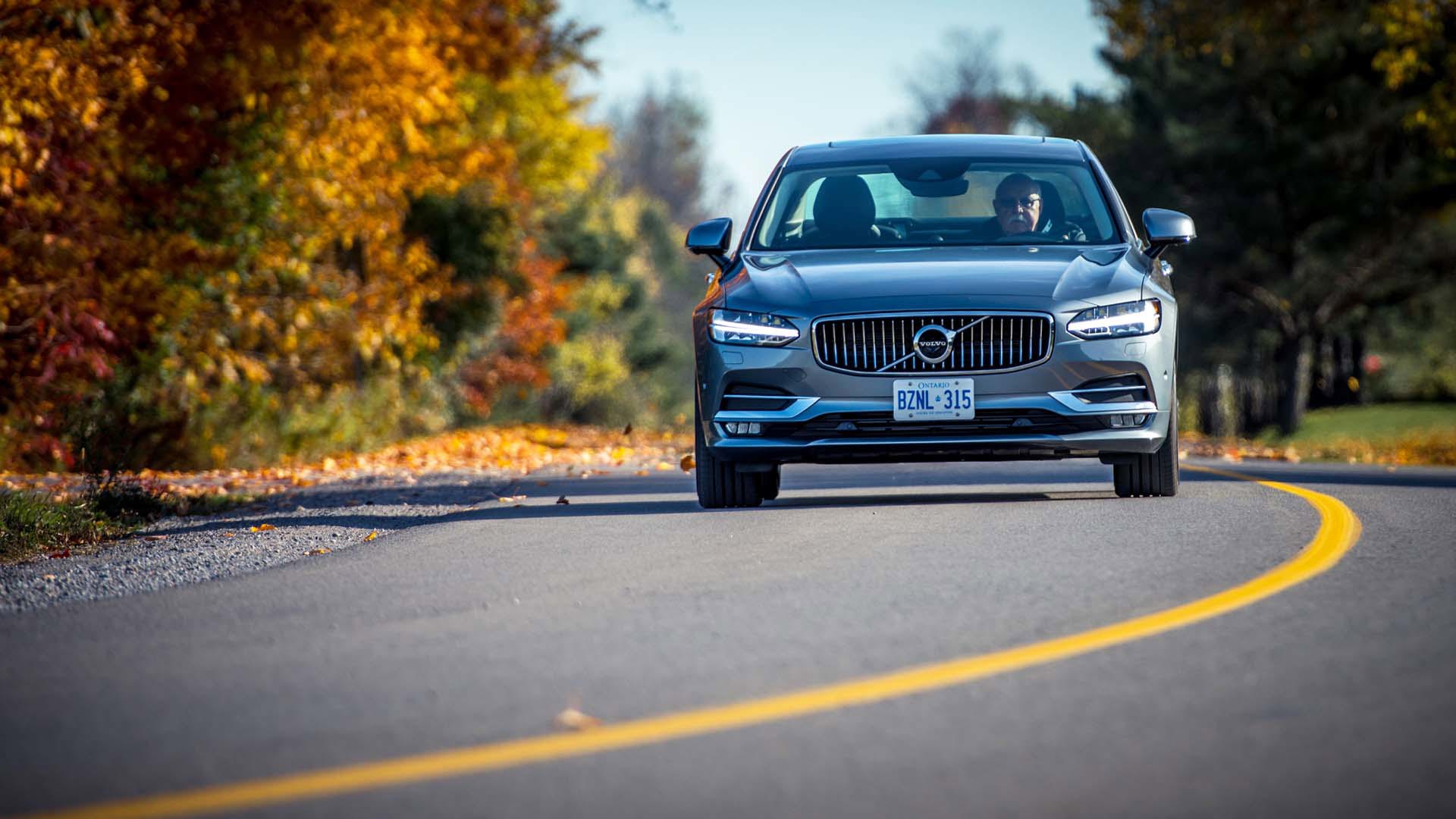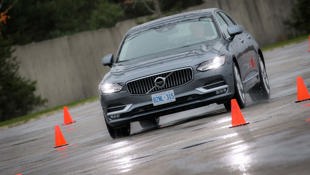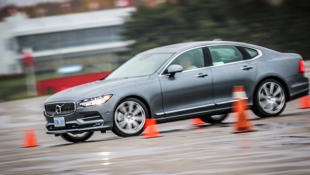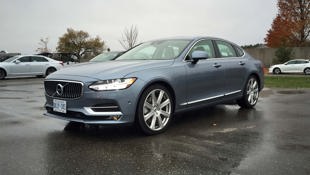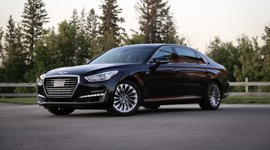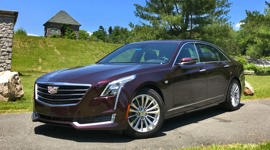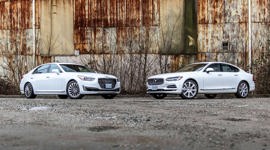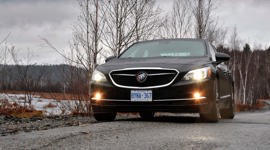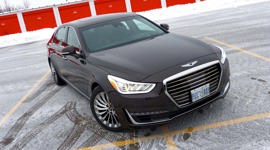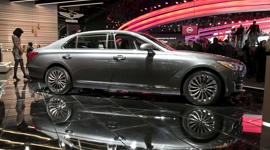Four different manufacturers presented five different sedans for Premium Large Car consideration at the Automotive Journalist Association of Canada Car of the Year TestFest, each one a sensational effort that will surely impress their targeted driver.
2017 is going to be a good year for premium sedan buyers as the following entries attest.
2017 Buick LaCrosse ($51,000)
Buick provided three examples of the new LaCrosse for evaluation. Each one equipped the same, but finished in different colours: Polar White, Graphite Grey and, the car I was assigned to drive in, Onyx Black.
The LaCrosse is one of those cars that looks pretty good in its photos, but walking up to it, the big, black sedan has much more presence in reality than the images portray. It looks long, low and very impressive.
Inside, the story is the same – a roomy and nicely finished cabin that’s every bit as handsome as the outside. GM has done an excellent job with the ergonomics in the LaCrosse. The primary gauges are large and legible with the central portion being a crisp, digital screen offering up different information to suit the driver’s needs. The infotainment system – Buck’s IntelliLink – utilizes a large, clear touchscreen and offers functionality that’s easy to learn, with Apple CarPlay and Android Auto both standard fare. The seats are heated, cooled and massaging, and swathed in high-quality leather which, along with a contemporary design aesthetic throughout, contribute to a very comfortable cabin.
In driving the LaCrosse, the 310 hp 3.6L V6 engine provides ample power to motivate the 1,741 kg sedan at a brisk rate. It’s in the other dynamic measures that the Buick starts to lose ground to the competitors in this group. The transmission – an eight-speed automatic – does a decent job of swapping gears in a smooth, leisurely manner, but when asked to pick up the pace, it’s reluctant to downshift, and doesn’t like to be hurried.
Handling, too, while nowhere near as nautical as your grandfather’s Buick from days gone by, will still speak to a driver looking for a smooth, comfortable ride over a sporty back-road carver. Most Buick buyers will likely be more than satisfied by the handling capabilities of the LaCrosse, and its all-wheel drive grip will provide greater surefootedness in inclement weather.
All said and done, it’s possible to order up Buick’s full-size luxury sedan with front-wheel drive for a starting price of less than $37,000, and that includes the powerful V6 engine. Even at the test car’s fully-loaded $51,000 sticker price, it undercuts the next cheapest car in this group by more than $20,000, making the LaCrosse an exceptional value in the segment.
2017 Cadillac CT6 ($85,635)
Suggesting a lack of confidence in either of its offerings, GM provided two entries into the same category, essentially competing against itself, or maybe just showing off the sheer depth of the General’s luxury car repertoire. Regardless of rationale, Cadillac’s presence in the group definitely stood out with its flagship sedan casting an imposing (and very large) shadow.
With a wheelbase more than 200 mm greater than the big Buick’s, the CT6 is unquestionably a full-sized premium car. The interior proportions are as generous as its exterior bulk would suggest, with lavish passenger space both front and rear.
But it’s not just the Cadillac’s dimensions that lend an air of luxury to the CT6. It’s finished in supple leather, real wood and other generally high-quality materials throughout. The CUE infotainment system, which has been a point of contention in other Cadillac models, is improved with a 10-inch touchscreen that seems more responsive than past applications. Plus, it’s rich and vibrant and among the best I’ve seen from other manufacturers. The optional Bose Panaray sound system is mind-blowing with its 34-speaker setup.
The most impressive aspect of the CT6 is how well it drives. It’s expected that a top-of-the-line Caddy will be a smooth cruiser on the highway, and indeed it is, but when hustled around the tight handling test course setup, the huge car changed directions as rapidly as a much smaller sport sedan. Credit to GM’s excellent Magnetic Ride Control and active rear steering (part of the $3,395 Active Chassis Package) to balance the ride and handling equation well.
Make no mistake, the CT6 is no sport sedan and it’s not going to harry the BMW M5 or Mercedes-AMG E 63, but then, that’s what Cadillac’s CTS-V is for. But with 404 hp and 400 lb-ft of torque, even 1,853 kg of CT6 bulk can be shoved around with authority.
The $85,635 Cadillac CT6 is the most expensive offering in the Large Premium Car category this year, but it shows that Cadillac is making a serious effort at taking on the large European premium sedans in its crosshairs. As impressive as they are, neither of GM’s offerings are my pick of the group this year.
2017 Mercedes-Benz E300 4MATIC ($79,550)
At just under $80,000 the new E-Class sedan is priced mid-pack in this group. It’s around six grand less expensive than the most expensive (Cadillac CT6), but nearly 30-large dearer than the bargain-basement Buick. And on paper, the Benz looks like a questionable value showing up with the smallest engine (1,991 cc) putting out the least amount of power (241 hp), yet still weighing in at 1,765 kg.
What the numbers don’t tell is how this E300 4MATIC sedan puts all its elements and “Benz-ness” together in a wholly luxurious experience – which is why it was our autoTRADER.ca Top Pick for Luxury Car shoppers in 2017.
Slotting between the flagship S-Class and mid-sized C-Class sedans, the now-full-sized E-Class blends the best elements from each in terms of styling and design, both inside and out, bringing the E300 up to date with the current family look. Fans of the C-Class styling (of which I am definitely one) will love the look of the E, though some may find it too familiar and wonder if it’s worth spending the extra money on the moderately larger sedan.
From a visual cachet standpoint, the answer to that is probably no; but inside, the E300 looks more like an S-Class than a C-Class thanks to the giant LCD display that spans two-thirds of the dashboard’s width, incorporating everything from the primary gauges to the latest COMAND infotainment system. What’s more, the materials used – real wood, aluminum and leather – not only feel great, but are artfully presented throughout the cabin. Unlike staunch and severe E-Class accommodations from generations past, this new car has exceptional fashion sense and style. Of course, that real leather comes at a price and in this case, it’s part of a $4,100 Exclusive Package, coupled with an additional $1,200 of optional cooling elements for those same front seats.
Another option worth bragging about is the $3,000 Intelligent Drive Package that includes Drive Pilot and comes close to an autonomous driving machine with the car’s ability to modulate speed, maintain lane positioning and even make lane changes.
Should you choose to drive the E300 yourself (and we hope that you do), you’ll find the Benz hallmarks of solidity, decent steering feel and competent handling. Being the least powerful car in this bunch by a fair margin, the Mercedes does feel comparatively weak-kneed especially against the beastly Cadillac, though for those putting safety and solidity over sportiness, the E300 should do just the trick.
The new E300 4MATIC will be exactly what lovers of past E-Class Benzes have always loved about their cars: bank-vault feel, luxury and the panache afforded by the three-pointed star. For me, I prefer a car that can offer value, luxury and performance beyond what the E300 can offer.
2017 Genesis G90 ($84,000)
Genesis (don’t call it a Hyundai anymore) is the standalone luxury moniker now distanced from the slanted-H brand. Regardless of the badge on the nose, the G90 is the top-shelf, full-size Korean luxury sedan, taking over for the Equus.
In the past, with the Equus and Genesis 5.0 sedans, Hyundai offered impressive levels of luxury and refinement for comparatively little money when measured against its Japanese or German counterparts. Now at $84,000, the G90 slots right between the Cadillac and Mercedes in this group, showing the company’s confidence in their new upscale brand.
Never sport sedans, the big cars were nonetheless swift and smooth, making better long-distance highway cruisers than back-road carvers. The same is true for the new G90, only more so. This car is quiet, like inside-a-sarcophagus-in-the-middle-of-a-pyramid quiet. Driving along on both the country roads and even at elevated highway speeds, wind noise and road rumble simply do not exist, and the engine hum is so distant it’s as if the Genesis is powered by the engine in a nearby vehicle. But it’s not just the silence one notices, but the exceptional smoothness of the Genesis as well. The ride is liquid and drivetrain vibrations are remarkably quelled.
What makes that last point even more impressive is that the engine found in these test G90s is not the buttery-smooth Tau V8 that’s still an option with its 420 relaxed horsepower. Instead, our test car featured a new 3.3L twin-turbo V6 that puts out 365 horsepower. It’s the V6’s torque – 376 lb-ft from 1,300 to 4,500 rpm – that moves the 2,170 kg luxo barge so effortlessly.
On the closed handling course, the G90 floats more than it dances, but there is certainly enough handling capability to keep the Genesis out of harm’s way when evasive maneuvres are needed out in the real world.
With an interior that’s grandly spacious and interior finishes that are of a very high quality (though not as stylish or exotic as some of the competitors), the G90 stands out as a true luxury car of the highest order without the revered badge and exorbitant price. Such a strong effort from Genesis certainly deserves to be a finalist in the Large Premium Car category, but doesn’t get my vote for best in class.
2017 Volvo S90 ($73,925)
Before governments strangled the creativity out of automotive design with safety and efficiency regulations, cars were stylish expressions of personality; some legitimately earning the title of rolling artworks. Design was key and many of those machines are celebrated at the Concourse d’Elegance around the world today.
While the mass-produced Volvo S90 is unlikely to ever win Best in Show at Pebble Beach, it does represent a fine example of what happens when a company is allowed to truly design a car with a focus on style. Case in point: the small, square crystal that’s twisted clockwise to start the car, or counter-clockwise to switch it off. It’s a frivolity, for sure, but a unique design element that helps make the S90 feel special.
From the squat, low-roof style of its exterior, with clean lines and tasteful brand details (like the Thor’s hammer shape in the LED light signature), the S90 is handsome on the outside. From any angle, the proportions are just right and nothing is over-done.
But it’s inside that the S90 stands out. The use of real wood – not that old-fashioned, glossy dark walnut, but modern, open pore, textured stuff – and leather with pronounced stitching boldly proclaims a sense of contemporary European style. The large, vertically oriented touchscreen makes excellent use of the dashboard space and is intuitive to operate. The seats are supportive and comfortable, and of course, being a Volvo, safety is also a priority, with an elaborate suite of semi-autonomous driving modes and capabilities.
All of this style, comfort and luxury in and of itself would make the S90 a contender in this category, but its fully loaded $73,925 price – second lowest in this group – makes it a solid value too.
Most surprisingly, the full-size S90 is remarkably fun to drive as well. Steering is sharp and the handling feels far more sport sedan than luxo-cruiser, proving to be legitimately fun to hustle around the handling course. Impressively, this handling prowess isn’t at the expense of ride quality, which is composed and supple when cruising the highway.
Skeptics will turn their noses up at a tiny 2.0L four-cylinder engine as the sole power plant for the S90, but with 316 hp and 295 lb-ft of torque, the Volvo is impressively quick. No four-cylinder mill will ever be as smooth or melodious as a larger displacement V6 or V8, and the soundtrack from the S90’s engine bay is no symphony, but it’s also subdued enough to not be bothersome.
No other car in this year’s Large Premium Car category can match the Volvo S90’s combination of luxury, driving enjoyment, value and legitimate style, making it my pick for the prize.
Alternatives
Just because a vehicle meets the criteria to be entered into the Canadian Car of the Year Awards competition, doesn’t mean it will necessarily be included. The BMW 7 Series is new this year (2016) and the model line-up has grown to include everything from a twin-turbo V8, long-wheelbase model, to a plug-in hybrid version. The big Bavarian would definitely be on my list as one of the finest Large Premium Cars of the decade, never mind this year.
BMWs are known for their performance chops and the 750Li, despite its gargantuan size, does not disappoint. It’s fast and surprisingly agile for a car that’s longer than a Chevy Tahoe.
It’s also an incredible display of BMW’s technology prowess, from the very bones of the car (its Carbon Core incorporates a blend of lightweight steel, alloys and carbon fibre) to high-tech wizardry like Gesture Control and a Park Assistant feature that places the car without the driver even being inside.
The absolute decadence of the rear-seat space in the extended wheelbase 750Li I tested is what really amazes. A rear passenger seat that reclines and stretches out – enabling a lucky passenger to experience a first-class-jet-like accommodation replete with climate control and massage features – is about as good as it gets.
That said, at more than $150,000 as tested, the big BMW costs more than two of my top pick, the fully loaded Volvo S90.
Category winners for the 2017 Canadian Car of the Year will be announced on December 6.
By the numbers
|
Model |
As-tested price |
Horsepower (hp @ rpm) |
Torque (lb-ft @ rpm) |
Transmission |
Fuel economy (L/100 km, cty/hwy/cmb) |
|---|---|---|---|---|---|
|
Buick LaCrosse |
$51,000 |
310 @ 6,800 |
282 @ 5,200 |
8AT |
11.6/8.1/10.0 |
|
Cadillac CT6 |
$85,635 |
404 @ 5,700 |
400 @ 2,500 |
8AT |
13.0/9.1/11.2 |
|
Genesis G90 |
$84,000 |
365 @ 6,000 |
376 @ 1,300–4,500 |
8AT |
13.8/9.8/11.8* |
|
Mercedes-Benz E300 4MATIC |
$79,550 |
241 @ 5,500 |
273 @ 1,300–4,000 |
9AT |
10.8/8.1/9.6 |
|
Volvo S90 |
$73,925 |
316 @ 5,400 |
295 @ 2,200–5,400 |
8AT |
10.8/7.6/9.4 |
|
*EPA figures; NRCan fuel consumption rating not yet available |
|||||
